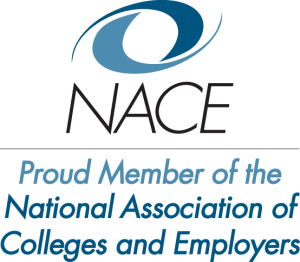Worried about enrollment numbers? Keep the students you have.
Enrollment is on every college administrator’s mind these days. A demographic cliff is approaching–and no university is truly safe. This predicted drop in the number of college-bound students will be felt across higher education, and it’s important for all colleges and universities to be proactive in their approaches to enrollment in order to guard against a dramatic decline in their student bodies.
Admissions is only one side of the enrollment coin. The other (often overlooked) side is retention. And it’s no wonder retention gets the short end of the stick: While the work of admissions typically belongs to its own office and is highly visible, retention work is often spread among various offices and flies under the radar. (Everyone knows when the admissions office brings in a record-breaking class–but very few people know when a student who is at risk of leaving the institution instead decides to stay.)
Nonetheless, retention is an important driver of enrollment. Once you’ve spent marketing, admissions, and financial aid dollars on attracting a student to your institution, it only makes sense to continue to invest in that student’s success in order to retain them through graduation. In addition, retention is easier than increasing admissions. These students already made the decision to choose your college–they just need a reason to stay.
So how do you ensure your institution is taking the right steps to boost student retention now, before enrollment becomes an even sticker issue across higher education?
Show students their possible future, early and often
Early intervention is key when it comes to improving student retention rates. Students who start their college experience on the right foot are far more likely to continue to persevere when things get a little more rocky down the line.
To ensure your students are beginning their college experience in a positive way, it’s important to connect them to people, new experiences and organizations. However, to make sure their college experience drives them to persist to graduation, it's important to consistently show them what a vocational life could look like after graduation. And it's even more critical to help them find a sense of purpose and meaning while in their education to career journey. If you can incorporate all of that in the classroom as well ... you will have a recipe for real student success.
We believe, a leaner needs three things. Self discovery through assessments that inform and enlighten the student about their unique gifts. A mode of vocational exploration that clearly shows them how their gifts are best suited for their future in a vocational pathway. And finally a connection mechanism to show them with their best fit for college majors, internships and even jobs.
PathwayU offers a great way to do just that. By using this platform with incoming and first-year students, you can help them reflect on their personal gifts and drivers for success as you show them direct connections to majors at your university that are a great match for them.
Even better, this process can begin before your students even step foot on campus. Pitched to students as their lifetime "education-to-career compass", platforms like PathwayU can be used with prospective students, offering them a way to make a clear connection to your college’s programs and begin to have conversations with professors and career mentors in their areas of interest and values.
This is how you set students up for success: Help them through the process of self-reflection in order to identify their purposeful path early, and then put processes and structures in place–like academic and career advising–to connect them to the appropriate resources on your campus.
Without a clear vision of how an education connects with a meaningful work-life after graduation, a student will flounder when the classes get hard, change their major and even doubt their decision to attend college.
- Eric Leftwich, CoFounder at jobZology
Entice students to become life-long learners
Once a student has self engaged in the education adventure the next step is laying out the path to graduation and career. This is where faculty, advisers, peer mentors, and especially career center professionals can provide the most benefit.
It’s imperative that colleges help students envision themselves graduating and landing a career they love by providing consistent career support during all four years. While the first year may focus primarily on finding a major and connecting to campus resources, the second, third, and fourth year should include opportunities for the student to dip their toes into potential careers, gain experience, and deepen their self-knowledge. Referring back to PathwayU often can help students remember their guiding purpose and design a path through college that incorporates all of this and more.
One of the most critical keys to student retention is intentional, planned guidance through the major and career discernment processes. Without a clear vision of where they want to go and how to get there, a student will begin to flounder and doubt their decision to attend college. By helping them map the journey and providing clear action steps for how to achieve their goals, your college can significantly increase the likelihood of your students to persist and graduate. And with the help of career planning tools like PathwayU, your students will have a clear and constant reminder of who they are and what they’re working towards.
-1.png?width=288&height=67&name=PathwayU_PGLogo%20(1)-1.png)










